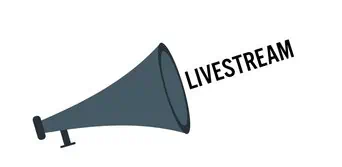How to create a marketing strategy to promote your livestream
Now that livestreaming’s takeover of the music industry is starting to seem a little less temporary, it’s time for artists to buckle down and develop a promotional strategy to capture and keep viewers’ interest.
Guest post by Dayna Young of Fred & Augustus
Once the poor cousin of touring, livestreaming has seen rapid growth as a legitimate form of fan engagement due to the COVID-19 pandemic. Prior to the pandemic the challenges for livestreaming lay in its value perception, access, and minimal fan engagement opportunities. However, with technology rapidly evolving, and in the long-term absence of live performance opportunities (and the revenue derived from it), the music industry has had to get savvy about exploring potential new and viable revenue streams; something which livestreaming has increasingly begun to represent.
Livestreaming has opened up potential new global audiences for artists and bands as well as presenting a format in which to continue to engage mega-fans (and delight them with exclusive merch bundles or exclusive offers aligned with the livestream). This said, how you promote a livestream differs greatly from how you would promote an event or a tour. In fact, it has more overlap with both traditional ticketing momentum and the digital promotion of a single release. Want to know more? Read on to discover our playbook for how to create a marketing strategy for promoting your livestream.

Promoting a livestream can be broken down into key focus areas: Pre-release, event launch, day-to-day, last call and post event. Within each bucket identify your critical tasks as they apply to marketing, digital, creative, and PR. For example, your Pre-sale marketing tasks might include items such as ‘determine livestream platform’, ‘set ticket price’, ‘draft marketing budget’, ‘identify affiliate ticket sellers’ or ‘develop merch plan’. Conversely, as you move into event launch your focus may shift from these items to tasks such as ‘Activate partnerships, affiliates, influencers’ or ‘livestream merch on-sale’. These tasks aren’t your marketing strategy, but they should be incorporated into your project management plan to help effectively promote your livestream to your fanbase.
When it comes to the marketing strategy itself, we recommend a centralized document which can be shared with relevant team members. Outline your event details (date, ticket price, CTA, URL, event blurb etc) and identify your event objective (this may be your goal for the number of sales, or overall views of the livestream within a restricted period of time). Knowing this information helps you to work backwards from the livestream air date to plan your rollout, budget, social media, email marketing and advertising plan.
Understanding who you’re speaking to: their age, location, likes and dislikes, is the first step in any strong marketing strategy so begin by identifying your audience. You can do this through data analysis or by applying information you draw from your fan personas. With this information in-hand you can move onto the crux of your strategy: your roll out plan.
Your roll out plan contains a mix of your social media, email marketing and advertising plan. For some livestreams your roll out may also include and acknowledge timings for your PR, e-commerce or a radio plan, but that really depends on your overall budget, goals and purpose of the livestream. Ensure you’re created incentives for purchase (such as exclusive merch bundles), structure your strategy to take advantage of your social media and email audience, while being mindful that you’re speaking to your 3 levels of fans (ambient, engaged fans and mega-fans). Then begin planning how you’ll promote your livestream. For pre-sale this might include ‘coming soon email sent to subscribers’, ‘pre-save concert link advertising live’. Honing in on this further, your coming soon email would outline your Subject line, Pre-header, Body copy and CTA and your advertising plan would identify your budget, audience targeting, creative, copy and your flight dates. Bringing this back full circle to your project management plan, you’ve now also identified key tasks including ‘create, review, test and send coming soon email’ as well as ‘design ad creative’ and ‘set up ads’ which can be designated to relevant team members.
As with any marketing strategy it’s important that you identify success metrics and KPI’s and that regular updates are circulated to the core team. Who will need access to updates on ticket sales, how regularly and so forth? Ensure you’re cross-checking sales data daily against ad performance, tweaking your ad sets as necessary and shifting budget as data dictates you should.
With this approach to creating a marketing strategy to promote your livestream you set the foundations for truly succeeding at building – and growing – a loyal base of fans who purchase tickets to your livestreams and engage with you digitally. It provides longevity and allows conversations about your artist brand to continue well after the livestream. By successfully selling tickets to your livestream and engaging those who attend, you’ve continued to create and grow a valuable audience of fans who will be delighted to see you perform live again very soon.
Dayna Young has 15+ years global experience in music, entertainment and in leading creative teams to success. As the Founder of Fred & Augustus she provides strategic marketing resources for artists seeking to grow their online profile and engagement, with a focus on developing existing and new revenue streams. Ultimately, what gets her out of bed in the morning is the knowledge that she’s creating opportunities for artists.